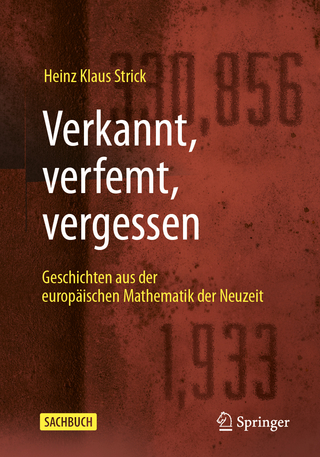
Quantitative Literacy Through Games and Gambling
Chapman & Hall/CRC (Verlag)
978-1-032-65915-2 (ISBN)
This book was developed to address a need. Quantitative Literacy courses have been established in the mathematics curriculum for decades now. The students in these courses typically dislike and fear mathematics, and the result is often a class populated by many students who are unmotivated and uninterested in the material.
This book is a text for such a course; however, it is focused on a single idea that most students seem to already have some intrinsic interest in and is written at an accessible level. It covers the basic ideas of discrete probability and shows how these ideas can be applied to familiar games (roulette, poker, blackjack, etc.). The gambling material is interweaved through the book and introduced as soon as the necessary mathematics has been developed. Throughout, mathematical formalism and symbolism have been avoided, and numerous examples are provided.
The book starts with a simple definition of probability, goes through some basic concepts like combining events and expected value, and then discusses some elementary mathematical aspects of various games. Roulette is introduced very early on, as is the game of craps, which requires some knowledge of conditional probability. Other games like poker, blackjack, and lotteries, whose study requires some rudimentary combinatorics, come shortly thereafter. The book ends with a brief introduction to zero-sum games, with some attention paid to the use of these ideas in studying bluffing.
In addition to discussion of these traditional games, the author motivates probability by talking about a few applications in legal proceedings that illustrate how mathematics has been misused in the courtroom. There is also a discussion of the Monty Hall problem, a nonintuitive result in probability that has an interesting and colorful history.
Hopefully, students studying from this text will find that mathematics is not as horrible as they have always thought and offers some interesting applications in the real world. This should perhaps be the goal of any quantitative literacy course.
Mark Hunacek received his Ph.D. in mathematics from Rutgers University, and also acquired a wife who that year had also gotten a mathematics Ph.D. Faced with the familiar “two body problem”, which was more of an issue in 1978 than it is now, he went to law school and then spent almost three decades practicing law. After retiring from the practice of law, things came full circle and he was lucky enough to be offered a position in the mathematics department at Iowa State University, where, as one of his responsibilities, he redesigned and oversaw the two quantitative literacy courses offered there, one of which inspired this textbook. In 2021 he retired and became a Teaching Professor Emeritus.
1. Basic Discrete Probability
1.1. Elementary Set Theory
1.2. Sample Spaces
1.3. Events
1.4. Definition of Probability
1.5. Complimentary Events
1.6. Expected Value
1.7. Odds
2. Roulette
2.1. The Rules of the Game
2.2. Some Basic Probability Calculations
2.3. Roulette “Systems”
3. Conditional Probability and Independence
3.1. Definition of Conditional Probability
3.2. Law of Total Probability
3.3. Independent Events
3.4. The Monty Hall Problem
4. Craps
4.1. Rules of the Game
4.2. Analysis of the Shooter’s Game
4.3. Other Bets
5. Counting Large Sets: An Introduction to Combinatorics
5.1. Two Counting Rules
5.2. Permutations and Combinations
6. Poker
6.1. Poker Hands and their Probabilities
6.2. Video Poker
6.3. Texas Hold ‘Em
7. Lotteries and Keno
7.1. Lotteries and Powerball
7.2. Keno
8. Blackjack
8.1. Rules of the Game
8.2. Basic Blackjack Calculations
8.3. Card Counting
9. Farkle
9.1. Rules of the Game
9.2. Various Farkle Probability Calculations
9.3. Should You Risk Another Roll? The Probability of Farkling
10. An Introduction to Game Theory
10.1. Introduction and Basic Definitions
10.2. Zero-sum Games: Domination
10.3. Zero-sum Games: Saddle Points
10.4. Zero-sum Games: No Saddle Points
10.5. Solving 2 x 2 Zero-sum Games
10.6. A Simplified Poker Game
| Erscheinungsdatum | 13.09.2024 |
|---|---|
| Reihe/Serie | Textbooks in Mathematics |
| Zusatzinfo | 2 Halftones, black and white; 2 Illustrations, black and white |
| Sprache | englisch |
| Maße | 156 x 234 mm |
| Gewicht | 381 g |
| Themenwelt | Mathematik / Informatik ► Mathematik ► Allgemeines / Lexika |
| Mathematik / Informatik ► Mathematik ► Angewandte Mathematik | |
| ISBN-10 | 1-032-65915-7 / 1032659157 |
| ISBN-13 | 978-1-032-65915-2 / 9781032659152 |
| Zustand | Neuware |
| Informationen gemäß Produktsicherheitsverordnung (GPSR) | |
| Haben Sie eine Frage zum Produkt? |
aus dem Bereich


